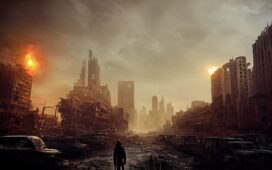Geologists have revealed the history of a lost continent in painstaking detail for the first time.
Greater Adria would have been about the size of Greenland and attached to what are now France, Spain and Africa.
In a 427-page long record of 240million years of world history, researchers have detailed how the continent essentially crumbled into what is now Europe.
The paper is the most detailed reconstruction of how the Earth’s land masses could have looked a quarter of a billion years ago.
And Greater Adria, which could have stretched from the Alps to Iran, may have been the driving force behind the formation of mountains throughout Italy, Turkey, Greece and south-eastern Europe.

Greater Adria would have been attached to the north side of the prehistoric supercontinent of Gondwana, which was made up of almost the entire modern world – land masses which are now Africa, Antarctica, South America, Australia and parts of the Middle East and Asia

The ‘lost continent’ was destroyed when it moved north and collided with what is now Europe, sending most of its mass under the ground and sea and the rest of it crumbling into rocks on land
‘The Mediterranean region is quite simply a geological mess,’ said the lead researcher, Professor Douwe van Hinsbergen, from Utrecht University in the Netherlands.
‘Everything is curved, broken, and stacked.’
Professor van Hinsbergen wrote the paper alongside colleagues from universities in Oslo, Johannesburg, Zurich, Birmingham and Queensland.
They explained how they believed not all of Greater Adria was above sea level, meaning it may have taken the form of an archipelago of islands such as the UK or the Philippines.
And as the Earth’s plates shifted, the continent was ground into Europe, with some of it being forced underneath the rock and the rest crumbling onto the top.
It was this crumpling together of the rock which may have laid the base for mountain chains such as the Alps, Live Science reported.
Before becoming its own continent, Greater Adria is thought to have been part of the prehistoric supercontinent, Gondwana.
Gondwana was made up of almost the entire modern world – land masses which are now Africa, Antarctica, South America, Australia and parts of the Middle East and Asia.
About 240million years ago, Gondwana began to move northward and collided with Europe between 100 and 120million years ago.
Rocks which broke off and were discovered by scientists have been spread across the world from Spain to as far afield as Iran, making reconstructing the events particularly difficult.
‘All the bits and pieces are jumbled up and I spent the last 10 years making the puzzle again,’ Professor van Hinsbergen told Live Science.

Professor van Hinsbergen said the collision of Greater Adria and what is now Europe may have formed the basis for many modern-day mountain ranges, which are detailed in this image

This map of Europe, Africa and Asia shows the spread of rock from Greater Adria, which is illustrated by the various shades of brown along the northern coast of the Mediterranean Sea encompassing Turkey, Greece, Croatia and italy
‘Every country has their own geological survey and their own maps and their own stories and their own continents. With this study, we brought that all together in one big picture.’
The continents collided at a rate of only about three to four centimetres per year, Science magazine reported, but it still managed to smash the 100km (62mi) thick continent deep inside the Earth below.
Using advanced computer software, Professor van Hinsbergen and his colleagues were able to recreate how the earth’s tectonic plates could have looked over time.
They looked at magnetic minerals left behind by bacteria inside rock samples believed to be from Greater Adria to try and work out how their positions had changed over time.
The minerals try to orient themselves with the Earth’s magnetic fields and are frozen in that direction in the rock, giving scientists an idea of how they may have rotated.
Professor van Hinsbergen’s paper was published in the journal Gondwana Research.
















